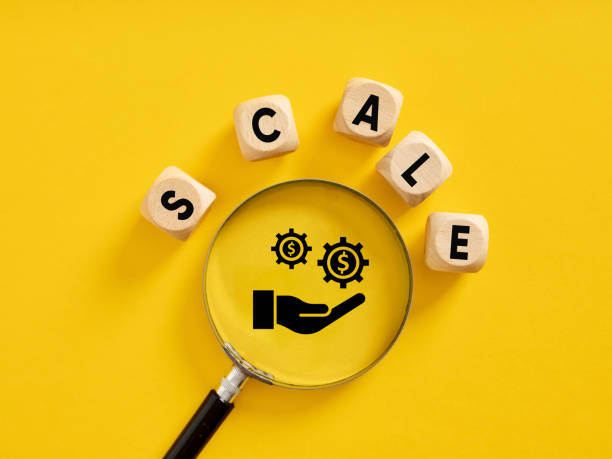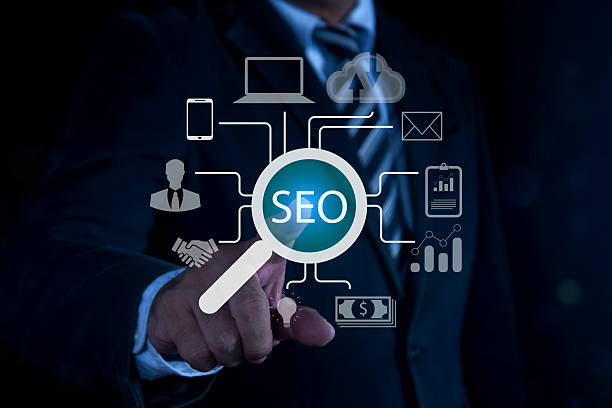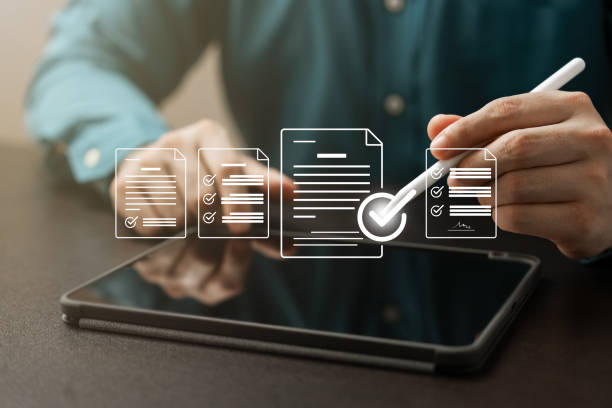What is Internal SEO and Why is it Important?

What is Internal SEO and Why is it Important?
Internal SEO, also known as On-Page SEO, refers to a set of techniques and actions that are performed within your website to improve your site’s ranking in search engines like Google.
These actions include optimizing content, site structure, title tags, meta descriptions, and many other things.
The importance of internal SEO stems from the fact that it helps search engines to better understand the topic and content of your site.
When search engines have a good understanding of your site’s content, the likelihood of your site appearing in search results for relevant keywords increases.
In other words, internal SEO helps you attract more organic traffic to your site.
In fact, internal SEO is one of the two main pillars of SEO (the other pillar is external SEO or Off-Page SEO).
Without a strong internal SEO strategy, your efforts for external SEO (such as link building) will not be effective enough either.
Optimizing internal SEO is like building a solid foundation for a house; before you want to put up the walls and put on the roof, you have to make sure you have a strong foundation.
Therefore, internal SEO is an integral part of any successful digital marketing strategy.
By investing in internal SEO, you can improve your site’s ranking in search engines, attract more traffic, and ultimately, boost your business.
Does your current website create the trust that potential customers should have in your business? If the answer is no, it’s time to have a professional and impactful corporate website with Rasaweb.
✅ Completely custom design tailored to your brand identity
✅ Increase lead attraction and credibility of your business in the eyes of customers⚡ Contact us for a free consultation!
Keyword Research; The First Step in Internal SEO

Keyword Research; The First Step in Internal SEO
Keyword research is the process in which you identify the words that users use to search for information in search engines.
These words are the same keywords that you should use in your site’s content so that your site appears in search results for those words.
To start keyword research, you should first think about your business topic.
What questions might users have about your products or services? What problems do your products or services solve? Answering these questions will help you create a list of initial keywords.
Then, you can use various keyword research tools such as Ahrefs Keywords Explorer, Semrush Keyword Magic Tool, Ubersuggest and Google Keyword Planner to find more relevant keywords with high search volume.
These tools show you what words are searched for the most and what keywords have less competition.
The goal is to find words that have both good search volume and low competition.
When choosing keywords, you should also pay attention to user intent.
Is the user looking for information? Do they want to buy a product? Do they want to solve a problem? By understanding the user’s intent, you can create content that best meets their needs.
After finding the appropriate keywords, you should use them strategically in your site’s content.
This includes using keywords in title tags, meta descriptions, headings, body text, and images.
Remember that your ultimate goal is to provide high-quality and valuable content to users.
Excessive use of keywords (keyword stuffing) not only does not help your site’s SEO, but can also cause your site to be penalized by Google.
Internal SEO is successful when it is used naturally and organically in the content.
Optimizing Titles and Meta Descriptions

Optimizing Titles and Meta Descriptions
Title Tags and Meta Descriptions are two important HTML elements that appear in search results.
The title is the title of your page that appears at the top of the search result, and the meta description is a short summary of your page’s content that appears below the title.
These two elements play an important role in attracting user clicks to your site.
To optimize titles, you should use keywords relevant to your page’s content.
The title should be attractive and persuasive and show users what your page has to offer.
The length of the title should not exceed 60 characters, as Google usually shortens longer titles.
To optimize meta descriptions, you should provide an accurate and compelling summary of your page’s content.
Meta descriptions should encourage users to click on your search result.
The length of the meta description should not exceed 160 characters.
You should also use relevant keywords in the meta description, but avoid overusing keywords.
Titles and meta descriptions are the first things users see in search results.
Therefore, optimizing these two elements can have a big impact on your site’s click-through rate (CTR).
The higher your click-through rate, the more likely your site is to rank higher in search results.
Internal SEO is significantly improved by optimizing these parts.
Here is a table to better understand the structure of titles and descriptions:
| Element | Description | Best Practice |
|---|---|---|
| Title Tag | The title of the page that appears in search results. | Includes the main keyword, attractive and concise (up to 60 characters). |
| Meta Description | A summary of the page’s content that appears under the title in search results. | Attractive, accurate and includes the keyword (up to 160 characters). |
Content Optimization for SEO

Content Optimization for SEO
Content is the king of SEO.
High-quality and valuable content not only attracts users to your site, but also makes them stay on your site longer and interact with other pages of your site.
These signals show Google that your site is useful for users and can improve your site’s ranking in search results.
To optimize content for SEO, you should consider the following:
- Keyword Research: As mentioned earlier, you should identify keywords relevant to your content topic and use them strategically in your content.
- Content Structure: Divide your content into different sections and use subheadings (H2, H3, H4, etc.) to organize the content.
This makes it easier for users to read and understand the content and also helps Google better understand the topic of your content. - Content Quality: Your content should provide users with accurate, up-to-date, and comprehensive information.
Use fluent writing without spelling errors and use images and videos to make the content more attractive. - Content Length: The length of the content should be appropriate to the topic.
In general, longer content usually ranks better in search results, but more important than the length of the content is its quality.
Make sure your content is worth reading. - Internal Linking: Use internal links to link different pages of your site to each other.
This makes it easier for users to navigate your site and also helps Google better understand your site’s structure.
Remember that your ultimate goal is to provide high-quality and valuable content to users.
If your content is useful to users, Google will also appreciate it.
Internal SEO has a close relationship with content optimization.
Does your current site show your brand’s credibility as it should? Or does it drive away potential customers?
Rasaweb, with years of experience in designing professional corporate websites, is your comprehensive solution.
✅ A modern, beautiful site that matches your brand identity
✅ Significant increase in attracting leads and new customers
⚡ Contact Rasaweb now for a free corporate website design consultation!
Image Optimization

Image Optimization
Images play an important role in the attractiveness and quality of your site’s content.
But large images can slow down your site’s loading speed and negatively impact the user experience.
Image optimization for SEO means reducing the size of images without losing their quality.
To optimize images, you should consider the following:
- Choose the Right Format: Use JPEG format for photographic images and PNG format for graphic images.
JPEG format has a smaller size, but PNG format offers better quality. - Reduce Image Size: Use online tools or image editing software to reduce image size.
Some of these tools include TinyPNG, ImageOptim, and Adobe Photoshop. - Use Alt Text Feature: The Alt Text feature helps search engines understand the content of images.
Write a descriptive and relevant Alt Text for each image related to the page’s content. - Image File Names: Use descriptive and relevant file names for images related to the content of the images.
Instead of names like DSC001.jpg, use names like seo-dakhli.jpg. - Image Dimensions: Upload images with the dimensions you actually need them to be.
Uploading images larger than the required dimensions only increases the page size.
By optimizing images, you can improve your site’s loading speed, improve the user experience, and help Google better understand your site’s images.
Internal SEO of images can play an effective role in improving your site’s SEO.
Site Speed Optimization
![]()
Site Speed Optimization
Site speed is an important ranking factor in Google.
Users expect web pages to load in a few seconds.
If your site is slow, users will leave your site and go to other sites.
This can lead to reduced traffic, reduced conversion rates, and a lower ranking for your site in search results.
To optimize site speed, you should consider the following:
- Choose a Suitable Hosting: Use a reputable and high-quality hosting company.
Cheap hosting usually has less speed and stability. - Enable Caching: Use caching plugins to store static versions of your site’s pages.
This makes your site’s pages load faster. - Compress Files: Compress your HTML, CSS, and JavaScript files.
This reduces the size of the files and increases the loading speed of the site. - Optimize Images: As mentioned earlier, optimize images.
- Use CDN: Use a Content Delivery Network (CDN) to distribute your site’s content to different servers around the world.
This allows users to receive content from the server closest to them and increases your site’s loading speed.
You can use tools like Google PageSpeed Insights and GTmetrix to analyze your site’s speed and identify problems that are slowing down your site.
Internal SEO and site speed have a direct relationship.
Suitable URL structure for SEO

Suitable URL structure for SEO
The URL (Uniform Resource Locator) structure of your website plays an important role in internal SEO.
A good URL can help search engines better understand the content of the page and can also improve the user experience.
The URL structure should be logical, readable and descriptive.
In general, the URL should be short, relevant to the content of the page and include keywords.
Here are some tips for creating a suitable URL structure for SEO:
- Use keywords: The URL should include the main keywords of the page.
This helps search engines understand the topic of the page. - Use lowercase letters: It is better to use lowercase letters in the URL because some servers are case-sensitive.
- Use hyphens (-) instead of underscores (_): Search engines consider hyphens as word separators, while they consider underscores as part of the word.
- Avoid numbers and special characters: The URL should be as simple and readable as possible.
Using numbers and special characters can make the URL confusing. - Use a logical directory structure: The URL structure should reflect the structure of your website.
This helps users and search engines to easily navigate your site. - Create short URLs: Shorter URLs are usually better than long URLs.
Shorter URLs are more readable and easily shared on social media.
Here is a sample table so you can create appropriate URLs:
| Situation | Unsuitable URL | Suitable URL |
|---|---|---|
| Products | example.com/p123 | example.com/buy-samsung-phone |
| Articles | example.com/blog/article-id-5 | example.com/blog/internal-seo-training |
The Importance of Internal Linking

The Importance of Internal Linking
Internal linking refers to the process of linking different pages of your website to each other.
This is important for internal SEO for several reasons.
First, internal linking helps search engines to better understand the structure and content of your website. When you link related pages to each other, you show search engines that these pages are related in terms of topic, and in this way, you help them to better index and rank your website’s content.
Second, internal linking helps to improve the user experience. When users can easily navigate your website and access the information they need, they are more likely to stay on your website longer and interact with other pages on it.
This can lead to an increase in conversion rates and improve your website’s ranking in search results.
Third, internal linking can help distribute PageRank on your website. PageRank is an algorithm used by Google to evaluate the importance of web pages.
When you link one page to another, part of the first page’s PageRank is transferred to the second page.
Therefore, internal linking can help improve the ranking of important pages of your website in search results.
For effective internal linking, you should consider the following:
- Use text links: Instead of using images or buttons, use text links to link pages.
- Use Relevant Anchor Text: Anchor text is the text that links to another page.
Use anchor text that is relevant to the content of the destination page. - Place links naturally in the content: Avoid overdoing it with linking and place the links naturally in the content.
- Link to important pages: Link to pages that you want to improve their ranking in search results.
Internal SEO and internal linking are two inseparable elements.
How much does it cost you to lose business leads due to a non-professional site? Solve this problem forever with professional corporate website design by Rasaweb!
✅ Increased credibility and trust of potential customers
✅ Easier attraction of new business leads
⚡ Get a free consultation right now!
Optimization for Mobile

Optimization for Mobile
Considering that most internet users access websites through mobile devices, optimizing a website for mobile is a necessity.
A mobile-friendly website is a website that can be easily viewed and used on mobile devices.
Mobile optimization has many benefits, including:
- Improving User Experience: A mobile-friendly website provides a better user experience for users who use mobile devices.
- Increasing Ranking in Search Results: Google prioritizes mobile-friendly websites in search results.
- Increasing Conversion Rate: A mobile-friendly website increases the likelihood of converting users into customers.
To optimize your website for mobile, you should consider the following:
- Use Responsive Design: Responsive design allows your website to automatically adapt to the screen size of the user’s device.
- Use Readable Fonts: Use fonts that are easy to read on mobile devices.
- Use Large Buttons: Use large buttons so users can easily click on them.
- Optimize Your Website’s Loading Speed: Mobile websites should load quickly.
- Avoid Intrusive Ads: Avoid ads that disrupt the user experience.
You can use Google’s Mobile-Friendly Test tool to check if your website is mobile-friendly.
Optimization for mobile is an important part of internal SEO.
The Role of Schema Markup in Internal SEO

The Role of Schema Markup in Internal SEO
Schema Markup is code that is added to your website and helps search engines better understand the content of your pages.
Schema Markup provides search engines with more information about the type of content, its topic, author, publication date, and other important details.
Using Schema Markup has many benefits, including:
- Improving the Display of Search Results: Schema Markup can make your website appear more attractive in search results.
For example, ranking stars, images, or price information may be displayed in search results. - Increasing Click-Through Rate: A more attractive display of search results can lead to an increase in click-through rate.
- Improving Search Engine Understanding: Schema Markup helps search engines to better understand the content of your pages and as a result, your website’s ranking in search results is improved.
There are different types of Schema Markup that you can use to label different types of content, including:
- Articles (Article): To label news articles, blog articles, and other types of text content.
- Products (Product): To label products for sale.
- Events (Event): To label events such as concerts, conferences, and exhibitions.
- Recipe (Recipe): To label food recipes.
- Review (Review): To label reviews of products and services.
You can use the Schema Markup Generator tool to generate Schema Markup code for your website.
Internal SEO is significantly improved by using schema markup.
Frequently Asked Questions
| Question | Answer |
|---|---|
| What is a Meta Title and why is it important in internal SEO? | The meta title is the most important element of internal SEO, which is displayed at the top of the browser tab and search results. This title helps search engines and users understand the main topic of the page and should include the main keyword. |
| What role does a Meta Description play in internal SEO? | The meta description is a short summary of the page’s content that is displayed under the title in search results. Although it does not directly affect ranking, its attractiveness can increase the click-through rate (CTR). |
| How should keywords be used in the page’s content? | Keywords should be used naturally and relevantly in strategic places such as the title, headings, first paragraph, and body of the text. Avoid overstuffing keywords (Keyword Stuffing). |
| What is the importance of high-quality and comprehensive content in internal SEO? | High-quality, unique, informative, and comprehensive content that meets the needs of the user is of great importance. Search engines give higher rankings to content that creates real value. |
| What is the application of heading tags (H1-H6) in the structure of internal SEO? | Heading tags (H1, H2, H3, etc.) are used to structure the content and specify the importance of different sections. H1 is the main title of the page and each page should have only one H1. Other tags are used for subheadings. |
| How can we optimize images to improve internal SEO? | To optimize images, use descriptive alternate text (Alt Text) that includes relevant keywords, reduce the image file size without losing quality, and use meaningful and relevant file names. |
| What are the characteristics of a friendly URL for internal SEO? | A friendly URL should be short, readable, descriptive, include main keywords, and be free of extra characters. The URL structure should be hierarchical and logical so that it is understandable for both users and search engines. |
| How does internal linking help with internal SEO? | Internal linking, by connecting related pages to each other, helps users and search engine crawlers to better understand the structure of the site, transfer the credibility of the pages, and increase the user’s time on the site. |
| What is the impact of page loading speed on internal SEO? | High loading speed is critical for both user experience and SEO ranking. Slower pages may be ignored by search engines and lead to an increased bounce rate. |
| Why is mobile compatibility (Mobile-Friendliness) so important in internal SEO? | Due to the increasing number of searches through mobile devices, having a responsive and mobile-compatible site is very important for user experience and ranking in search results (Google’s Mobile-First Indexing). |
And other services of Rasa Web Advertising Agency in the field of advertising
Smart Conversion Rate Optimization: A professional solution for user interaction with a focus on dedicated programming.
Smart Digital Advertising: A fast and efficient solution for campaign management with a focus on marketing automation.
Smart Brand Identity: A dedicated service for growth and increased click-through rates based on attractive user interface design.
Smart Website Development: A fast and efficient solution for increasing site visits with a focus on attractive user interface design.
Smart Reportage: A fast and efficient solution for increasing site visits with a focus on dedicated programming.
And over hundreds of other services in the field of internet advertising, advertising consulting and organizational solutions
Internet Advertising | Advertising Strategy | Advertisement Reportage
Resources
The impact of Google’s artificial intelligence on search results
,Moz Internal SEO Optimization Guide
,Google Ranking Drop Report
,Ahrefs Internal SEO Guide
? For a leap in the digital world and to achieve big goals, Rasaweb Digital Marketing Agency is with you. If you are looking for professional services including personal website design and innovative marketing strategies, contact us to take your business to the top.
📍 Tehran, Mirdamad Street, next to the Central Bank, South Kazerun Alley, Ramin Alley No. 6




